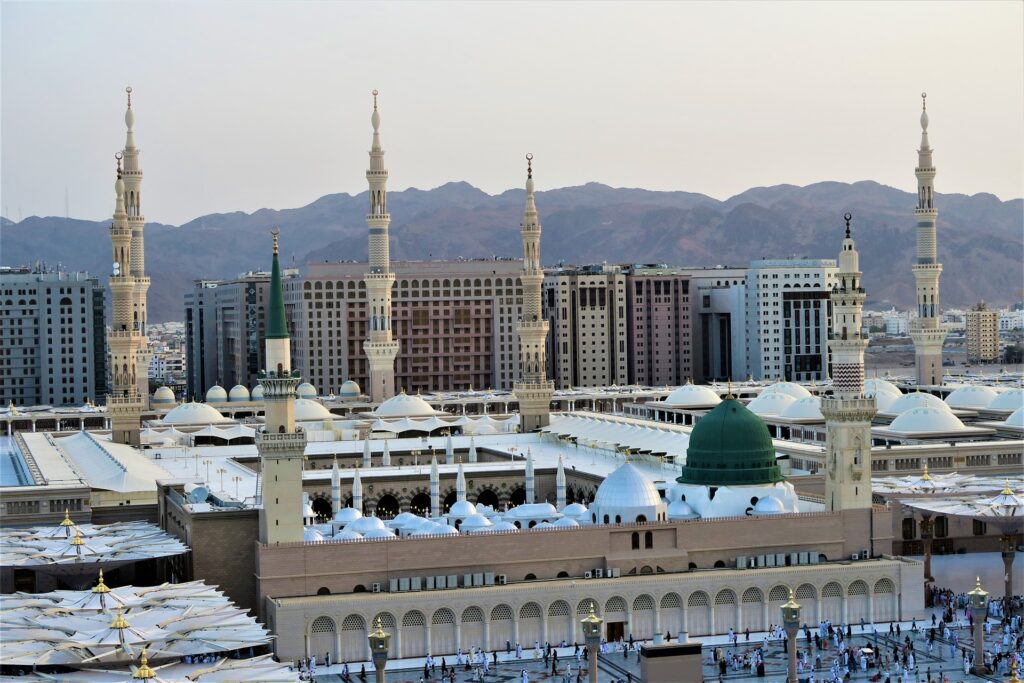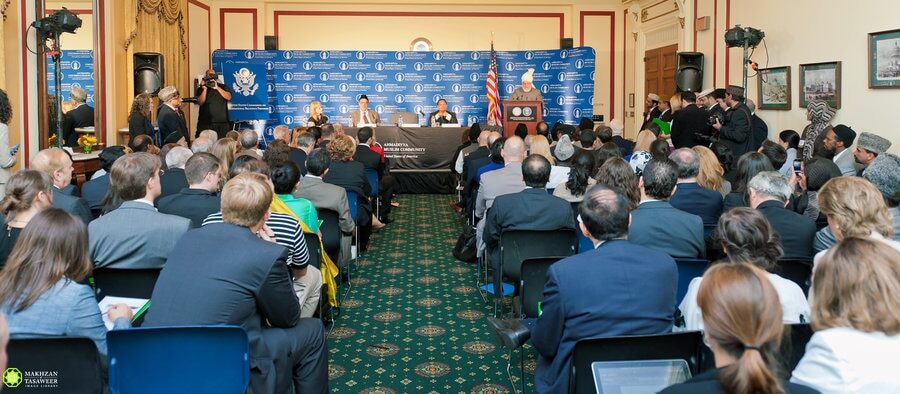#TrueCaliphate #CaliphOfMessiah

Adam Walker, Naib Sadr MKA UK
The tenth century sage, Abu al-Hasan al-Bushanji, famously said of Sufism – a term he and his contemporaries broadly understood to represent Islamic spirituality – that it was “… a name without a reality, [whereas] it used to be a reality without a name.”
The point here is that during the lifetime of Prophet Muhammadsa, the spiritual enlightenment and revival brought about by the new religion of Islam was a reality absorbed by every particle of those it had touched. It was the air inhaled by Prophet Muhammad’s Companionsra (Sahaba), the water they drank and the honey they sipped.
With time, much of the Muslim religious elite had fallen into a deep slumber, in which spiritual Islam had become a distant dream. Islamic spirituality, or Sufism as it was and continues to be termed by many, transformed from an infectious reality to something codified in a manual and taught by sheikhs or religious teachers – the guardians and intermediaries of these manuals.
Others rejected Sufism as unrealistic or a version of Islam filled with harmful innovation. Instead, they held on to memories of great military conquests made by old Islamic empires. For both and all the shades of grey in-between, a vision of Islam developed that was detached from the “reality without a name” that al-Bushanji described.
Instead, with each new generation, the teachings of Islam and noble example of Prophet Muhammadsa adopted a new layer of interpretation that reflected the socio-political agendas of that generation as much as it did the actual Quran and sunnah of the nascent seventh century Muslim community led by Prophet Muhammadsa.
There were exceptions to this, of course; each of these generations was sent one or more spiritual revivers, a mujaddid in Arabic, who reminded their Muslim brothers and sisters of the beautiful spiritual Islam of the early Muslim Medinan community that was “… a reality without a name” in the very truest sense.
More often than not, these revivers were rejected, castigated and imprisoned for not conforming to the religious policy of their rulers and the leading religious elite. Take for example the great Ahmadrh ibn Hanbal, who was imprisoned by two caliphs and even flogged to the point of unconsciousness.
The lower human desire for power, land and wealth was something the Muslims had to contend with long before this. Islam’s first Caliph, Abu Bakrra al-Siddiq, faced attempts from apostate tribes that attempted to sack the city of Medina; Umarra bin al-Khattab, Islam’s second Caliph, was fatally wounded during an attack as he led the prayer; his successor, Uthmanra bin Affan, was murdered by Muslims corrupted by a thirst for power and Alira bin Abi Talib, fourth of the Rashidun Caliphs, faced down opposing Muslim tribes in wars and was himself fatally wounded by extremists.

The above should not come as a great surprise to Muslims well versed in the traditions or hadith of the Prophet Muhammadsa. The Holy Prophetsa famously said that after his passing and after the appearance of the Rashidun Caliphs, the Muslim community would face several phases of harsh and coercive monarchies. This would end, the Prophetsa said, with Islam’s revival under the leadership of true, rightly guided, caliphate on the precepts of Prophethood.
Yet sadly, much of today’s Muslim elite has fallen victim to an inherent generational indoctrination that caused them to replace the spiritual reality of caliphate with classical Muslim monarchy, or mulk in Arabic. In this distorted vision, caliphate is nothing more than an institution obsessed with political expansion and military supremacy over the unbelievers.
While most Muslims await this type of caliphate, there is only one community today that believes it has an established institution of Caliphate and a Caliph whose successorship is on the precepts of prophethood. The sect is the Ahmadiyya Muslim Community and its current, fifth Caliph is Hazrat Mirza Masroor Ahmadaa.
It should also come as no surprise that Hazrat Mirza Masroor Ahmadaa is an utterly unimpressive and unfit caliph in the minds of almost all of today’s Muslim religious elite. And in all honesty, how could he or his predecessors ever live down to modern conceptions of caliphate?
Hazrat Mirza Masroor Ahmadaa is unconcerned with political gain or power. Rather than wage war against the unbelievers, he travels the world tirelessly with an unwavering desire to convince all of Islam’s beauty by spreading its peaceful teachings. Instead of memorialising historical acts of aggression, he would rather dedicate his time to building schools, hospitals and welfare institutions for Muslims and non-Muslims equally, across the world.

Though he would rather Muslims accepted his many calls for mutual respect and tolerance, the fact that so many Muslims oppose the Ahmadiyya Muslim Community is faith empowering. When history has shown us that all those chosen by God are persecuted – Prophets, Caliphs and Revivers alike – today’s opposition and persecution can only be taken as a truth-affirming sign.
So, rather than projecting twisted and romantic memories of medieval Islam’s so-called “Golden Age” onto Caliphate, today’s Muslim religious elite should understand that Caliphate is only rightly guided when it presents the world with the Islam that accords to the noble example and life of the Prophet Muhammadsa.
Should the religious elite awaken from their deep slumber and aspire to the true Islam, they will discover the living, breathing and preaching reality of true Islamic spirituality in Hazrat Mirza Masroor Ahmad, Khalifatul Masih Vaa.

